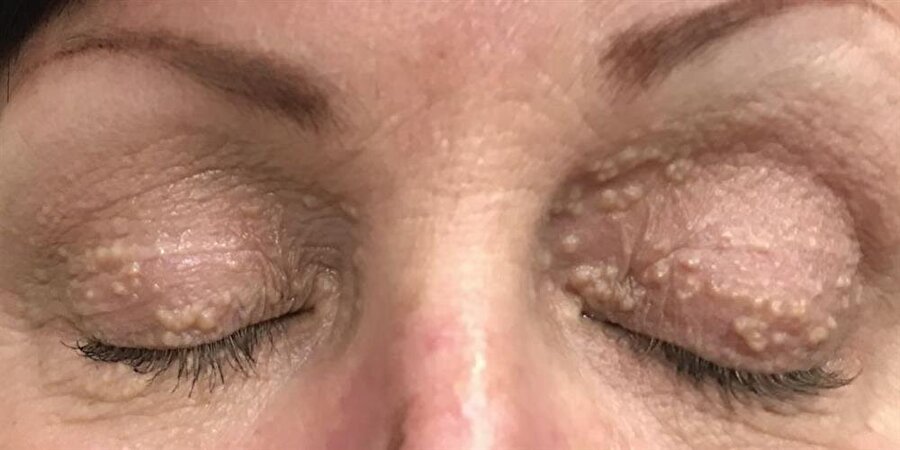
Milia, commonly known as “milia seeds” or “milia cysts,” are small, harmless yet sometimes bothersome bumps that appear on the skin. These tiny cysts often resemble whiteheads or small pearls and can occur in people of all ages, from newborns to adults. While they don’t pose a significant health risk, understanding their nature, causes, and potential treatments can help manage these skin irregularities effectively.
Understanding Milia
What Are Milia? Milia are small, dome-shaped bumps that typically appear on the face, though they can develop on other parts of the body as well. These cysts form when keratin, a protein found in the outer layer of the skin, gets trapped beneath the skin’s surface, leading to the formation of small cysts.
Types of Milia There are various types of milia, classified based on their causes and where they appear. Primary milia, for instance, often develops in infants and may disappear on its own. Secondary milia can occur due to various skin conditions or trauma.
Symptoms and Causes
Symptoms of Milia Milia usually appear as small, white or yellowish bumps on the skin’s surface. They are typically painless and don’t cause any itching or discomfort. However, their appearance might cause cosmetic concerns, especially when they appear prominently on the face.
Causes of Milia Several factors can contribute to the development of milia, including:
- Skin Trauma: Injury to the skin, such as burns or blistering, can trigger the formation of milia.
- Skin Conditions: Certain skin conditions, like bullous pemphigoid or porphyria cutanea tarda, can lead to the development of milia.
- Use of Heavy Skincare Products: Thick creams or lotions that clog the pores can contribute to milia formation.
- Sun Damage: Prolonged exposure to the sun’s harmful rays can also be a factor.
Who Is Affected?
Age Groups While milia are common in newborns, they can affect individuals of any age. In infants, these cysts often disappear within a few weeks without requiring treatment. However, in adults, they might persist for a longer duration.
Prevalence Milia are a relatively common skin condition, affecting people across the world. They can occur in anyone, regardless of gender or ethnicity.
Treatment and Prevention
Treatment Options Milialar often do not necessitate treatment, as they tend to resolve on their own over time. However, if they persist or become bothersome, several treatment options can be considered:
- Exfoliation: Gentle exfoliation can help remove dead skin cells, aiding in the natural shedding of milia.
- Topical Retinoids: Dermatologists may prescribe topical retinoids to encourage cell turnover and prevent the buildup of keratin.
- Lancing or Extraction: A dermatologist can use specialized tools to extract the milia safely.
Prevention Measures Taking preventive measures can help reduce the likelihood of developing milia:
- Use Non-comedogenic Products: Opt for skincare products labeled as non-comedogenic to prevent pore clogging.
- Sun Protection: Regularly use sunscreen to shield the skin from harmful UV rays.
- Gentle Skin Care Routine: Avoid harsh scrubs that can damage the skin, and opt for a gentle skincare routine.
Seeking Professional Help
Consulting a Dermatologist If milia persist or cause concern, consulting a dermatologist is advisable. A dermatologist can accurately diagnose the condition and recommend an appropriate treatment approach tailored to an individual’s skin type and condition.
Professional Treatment Dermatologists may employ various professional treatments based on the severity of the condition, including:
- Chemical Peels: Help in exfoliating the skin and encouraging cell turnover.
- Microdermabrasion: A procedure that uses a device to gently sand away the outer layer of the skin, aiding in milia removal.
Lifestyle and Skincare Approach
Healthy Lifestyle Habits
Maintaining a healthy lifestyle can contribute to overall skin health and potentially reduce the occurrence of milia. Adequate hydration, a balanced diet rich in vitamins and minerals, and proper skincare routines can promote skin wellness.
Skincare Products and Ingredients
Certain skincare ingredients, like vitamin A derivatives (retinoids) or alpha hydroxy acids (AHAs), can aid in promoting skin cell turnover and preventing milia formation. However, it’s essential to use these products cautiously and under professional guidance to avoid skin irritation.
Conclusion
While milia may seem concerning, they are typically harmless and often resolve without intervention. However, if these cysts persist, become bothersome, or appear in newborns, seeking advice from a dermatologist is recommended. Understanding the causes, symptoms, and treatment options for milia empowers individuals to take better care of their skin and effectively manage this common skin condition. By incorporating preventive measures and adopting a gentle skincare routine, individuals can maintain healthy skin and minimize the occurrence of milia




